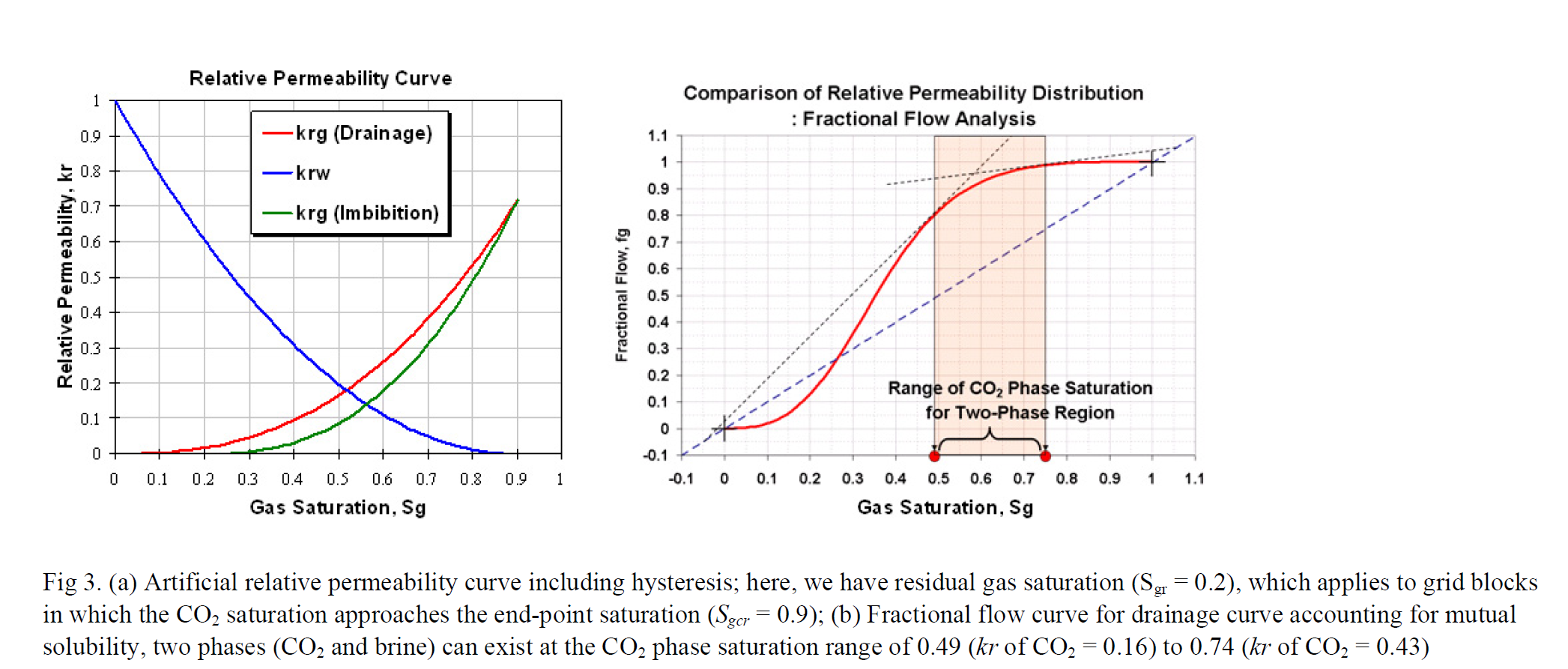The effect of faults on dynamics of CO2 plumes
The injected CO2 in a target formation can continue to migrate through permeable pathways due to geological heterogeneity as well as buoyancy. This movement drives a countercurrent flow of brine leading to increased residual phase trapping. The purpose of this simulation study is to understand the effects of geological structures, especially faults, on the dynamic behavior of the buoyancy-driven CO2 plume and the amount of residual trapping. We studied the behavior of CO2 plumes (speed, direction, saturation at displacement front, residual phase trapping) in 2D and 3D formations with a range of fault properties (conductive vs. sealing, angle relative to dip, distance from initial plume location).
Before CO2 plumes enter the fault-influenced region of the aquifer, the reservoir properties determine the plume behavior. The analytical approach for estimating plume movement based on Buckley-Leverett theory compares favorably with the simulation results; thus, it can explain the basic behavior of CO2 plume in this simplified reservoir model, which is homogeneous, anisotropic and tilted. If the plume encounters a fault within the reservoir, the fault can create new virtual source (CO2 build-up at the plume/fault intersection) for migration. It also leads to more complicated fluid movement, including counter current flow and/or dissolution.
A sealing fault, which acts as another boundary for CO2 plume, divides the aquifer into two parts: fault-independent zone and fault dependent zone. The analytical solution can predict the properties of CO2 plume in the first zone, but not in the latter one due to the countercurrent flow. In both cases of a declined and an inclined fault, CO2 accumulates along the fault due to anisotropy causing dominantly parallel migration. The build-up continues until saturation approaches the endpoint dictated by the relative permeability curves (forming a virtual source), and then CO2 moves upward along the fault. According to Land’s model the larger the gas saturation reached as gas invades, the larger the residual gas saturation when water invades. Therefore, the saturation of CO2 plumes moving in the reservoir will determine the efficiency of residual saturation trapping. On the other hand, a conductive fault, which acts as a new pathway for migration, may cause considerable leakage of CO2 toward the top boundary of the reservoir (inclined fault) or increase the width of CO2 plume (declined fault). In the latter case, the CO2 plume passes through larger area, which improves the efficiency of residual saturation trapping. To understand the dynamics of CO2 behavior, especially countercurret flow, in the faulted reservoir we analyze flow vectors of both CO2 and brine phases, which explain the process of CO2 phase build-up and/or leakage due to structural heterogeneity.
德克萨斯大学奥斯汀分校




